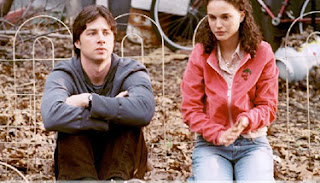The first act is the introductory act. It presents the protagonist's current situation, introducing the plot of the film. In Secret Window, Mort Rainey is struggling from writer's block during a rocky divorce with a cheating wife when he is accused of plagiarism by a man he's never met, John Shooter. The first question is how Mort is going to prove to this crazed accuser that his story was published before Shooter wrote his. Shooter gives Mort three days to get the magazine his story was published in from his ex-wife, and he'll be back. (21:11)
 |
| Shooter Threatens Mort |
The resolution act is what makes this film brilliant. Mort begins to talk to himself. He realizes that the only way to please Shooter is to fix the ending of the story in which the character kills his wife and buries her in the garden. Then out of nowhere, the climax is presented. Mort is Shooter. He invented him in his mind. His wife shows up at the house to finalize the divorce papers, and Mort makes the major decision of the entire plot. He's going to fix the ending (80:00). He's going to kill her and bury her in the garden she once kept.
The film ends with the sheriff talking to Mort about staying out of town, since, though no proof can be found, the townspeople know he killed his ex-wife and her new lover.
"You know, the only thing that matters is the ending. It's the most important part of the story, the ending. And this one... is very good. This one's perfect."


